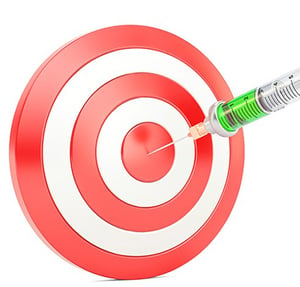 As a clinical lab director, you are driven by two forces which, at first glance, may seem in opposition to each other.
As a clinical lab director, you are driven by two forces which, at first glance, may seem in opposition to each other.
The first is your commitment to delivering accurate diagnostic test results to healthcare providers, a responsibility critical to ensuring that patients receive the most effective and timely treatment possible. In your lab, this means instituting a strong quality control (QC) program aimed at ensuring test performance and preventing the release of inaccurate results.
The second driving force is the responsibility you have towards to running an efficient, cost-effective clinical lab operation. This entails the responsibility to manage resources efficiently, to stay within allotted budget guidelines, and to avoid unnecessary spending.
The obvious assumption is that higher quality translates into higher costs (and bigger budgets). Look closer, however, and you’ll discover that the two forces outlined above are not necessarily opposed.
As you’ll see below, increasing accuracy and reliability in a clinical testing lab — through investment in additional QC measures, such as high-quality third-party controls — can actually translate into decreasing costs. Staying within budget and providing reliable results can go hand in hand.
The True Cost of Inaccuracy
Whenever an assay fails in your clinical lab, it can trigger a sequence of events which may cause the true cost of a single test to inflate:
- You will likely have to run the test a second (or third, or fourth…) time to provide the clinician with a reportable result — for the reimbursement of a single test.
- You may have to temporarily shut down equipment and assign lab staff to identify the root cause of the problem. Instead of processing patient samples and delivering diagnostic results, critical lab resources will be diverted to troubleshooting activities.
- Inaccurate results can also jeopardize your lab’s certification, especially if it happens during proficiency testing.
- And, obviously, reporting results that are revealed to be inaccurate only damages the lab’s reputation in the eyes of the clinicians it serves.
Finally, we can’t overlook the costs patients pay for assay failure. Wrong treatment decisions resulting from false test results can lead to a whole host of significant adverse medical consequences. There may not be lines for these on your laboratory budget, but they’re certainly the costs patients and clinicians remember the most.
How to Avoid Expensive False Results
The controls manufacturers provide with assay kits — often the only controls you’re required to run — are typically strong-positives and are often made from the same material as the kit calibrators. But to catch problems early, and thus to limit downtime and reporting errors, you need to pressure-test your assay at its lower limits with weak-positive reference material.
In a recent article, we explored how clinical labs can improve their quality control practices to reduce or eliminate inaccurate results. The main takeaway was to run both independent external controls as well as internal, in-kit controls on a daily basis for each assay. These independent controls should challenge your assays at their limits of detection, mimic true patient samples, and enable long term QC monitoring.
From a budget perspective, third-party controls may seem like just another thing on which to spend money. And most healthcare organizations do keep a tight leash on their expenditures. But when you compare the extreme cost of inaccurate results and assay downtime with the minimal cost of third-party controls, you’ll discover the controls are an investment that will pay off many times over.
Learn more ways to improve efficiency and decrease expenses in your clinical testing lab in our free guide for lab operations professionals, “Best Practices for Clinical Labs: Strategies for Implementing a Best-in-Class Quality Control System.”





